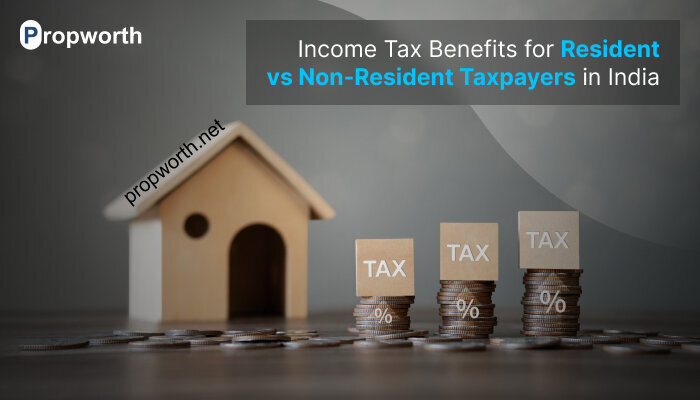Investing in mutual funds through Systematic Investment Plans (SIPs) is a popular strategy for building wealth over time. SIPs offer the advantage of disciplined investing, rupee cost averaging, and compounding returns. However, like any investment, there are risks that can ruin your financial goals if not carefully navigated. Here’s a detailed look at 15 common mistakes investors make when investing in SIPs, and how to avoid them.
1. Overcommitting Financially
One of the most common mistakes investors make is overcommitting financially without taking into account their overall financial situation. While SIPs are a convenient way to invest regularly, committing too much of your income can lead to cash flow problems, especially during unexpected financial crises. It’s crucial to assess your monthly budget, including essential expenses, savings, and emergency funds, before determining how much to invest in SIPs.
How to Avoid:
- Start with a modest SIP amount that doesn’t strain your finances.
- Gradually increase your SIP amount as your income grows or as you become more comfortable with your financial commitments.
2. Expecting Quick Returns
Many investors enter SIPs with the expectation of quick returns, influenced by market highs or success stories. SIPs, by design, are long-term investment tools that benefit from the power of compounding over time. Expecting immediate returns can lead to impatience and premature exits, which can significantly hamper your investment goals.
How to Avoid:
- Set realistic expectations and understand that SIPs are meant for long-term wealth creation.
- Avoid making decisions based on short-term market fluctuations.
3. Stopping SIPs During Market Downturns
It’s natural to feel anxious during market downturns, but stopping your SIPs during these times is a critical mistake. SIPs thrive on market volatility through rupee cost averaging, where you buy more units when the market is down, leading to potentially higher returns when the market recovers.
How to Avoid:
- Maintain discipline and continue your SIPs regardless of market conditions.
- Remember that downturns are opportunities to accumulate more units at lower prices.
4. Lack of Diversification
Investing all your SIPs in a single mutual fund or a specific sector can expose you to higher risks. Lack of diversification can result in significant losses if that particular sector underperforms.
How to Avoid:
- Diversify your SIP investments across different types of mutual funds such as equity, debt, and hybrid funds.
- Consider investing in different sectors and asset classes to spread risk.
5. Ignoring Fund Fees
Mutual funds charge fees, such as expense ratios and exit loads, which can eat into your returns. Many investors overlook these charges, leading to lower net returns over time.
How to Avoid:
- Compare the expense ratios of different funds before investing.
- Be aware of any exit loads or charges for premature withdrawal.
6. Not Reviewing Your Portfolio Regularly
Another common mistake is neglecting to review and rebalance your portfolio regularly. Market conditions and personal financial goals change over time, and your SIP investments should reflect those changes.
How to Avoid:
- Conduct a portfolio review at least once a year.
- Rebalance your portfolio if necessary to align with your financial goals and risk tolerance.
7. Following the Herd
Investing based on popular trends or following what everyone else is doing can be dangerous. The mutual funds that are performing well today may not perform the same in the future. Blindly following the herd can lead to poor investment choices and missed opportunities.
How to Avoid:
- Conduct your own research and invest based on your financial goals, risk appetite, and time horizon.
- Consult with a financial advisor if you are unsure about where to invest.
8. Not Aligning SIPs with Financial Goals
Many investors start SIPs without clearly defined financial goals, leading to investments that do not align with their long-term needs. Without specific goals, it’s challenging to determine the appropriate investment horizon and risk level.
How to Avoid:
- Define your financial goals, such as retirement, buying a house, or children’s education, before starting SIPs.
- Choose SIPs that match your investment horizon and risk tolerance.
9. Ignoring the Impact of Inflation
Inflation can erode the purchasing power of your investments over time. Many investors fail to account for inflation when planning their SIP investments, resulting in lower-than-expected returns in real terms.
How to Avoid:
- Factor in inflation when setting your investment goals and choosing SIPs.
- Consider SIPs in equity mutual funds, which have the potential to outpace inflation over the long term.
10. Not Taking Advantage of Step-Up SIPs
Step-up SIPs allow you to increase your SIP amount periodically, which helps you invest more as your income grows. Many investors stick to a fixed SIP amount for years, missing out on the benefits of investing more as their financial situation improves.
How to Avoid:
- Opt for step-up SIPs that automatically increase your investment amount annually or periodically.
- Regularly review your financial situation and increase your SIP contributions accordingly.
11. Starting SIPs Without Emergency Funds
Starting SIPs without an adequate emergency fund is a mistake that can force you to stop your investments during financial crises. An emergency fund acts as a financial cushion, preventing you from dipping into your SIP investments prematurely.
How to Avoid:
- Ensure you have an emergency fund equivalent to at least 6-12 months of living expenses before starting SIPs.
- This fund should be easily accessible and kept in a safe, liquid investment like a savings account or a liquid mutual fund.
12. Chasing High Returns
Investors often chase funds that have delivered high returns in the past, assuming they will continue to perform well. However, past performance does not guarantee future results, and high returns may come with higher risks.
How to Avoid:
- Focus on funds with consistent performance and those that match your risk profile and financial goals.
- Diversify your investments across different types of funds rather than concentrating on the highest-performing ones.
13. Ignoring Tax Implications
Many investors overlook the tax implications of their SIP investments. Depending on the type of mutual fund, the holding period, and the gains, you may be liable for short-term or long-term capital gains tax.
How to Avoid:
- Understand the tax rules for equity and debt mutual funds, including the holding period for tax benefits.
- Consider tax-efficient funds if minimizing tax liability is a priority in your investment strategy.
14. Withdrawing Too Early
Prematurely withdrawing from SIPs can significantly impact your long-term financial goals. Whether due to market panic or needing funds for other purposes, early withdrawals can lead to penalties and lost growth potential.
How to Avoid:
- Stick to your investment horizon and avoid withdrawing from SIPs unless absolutely necessary.
- If you need to withdraw, consider partial withdrawals or explore alternative sources of funds before liquidating your SIP investments.
15. Ignoring Professional Advice
Some investors either rely solely on their judgment or on hearsay, without seeking professional financial advice. This can lead to uninformed decisions and suboptimal investment strategies.
How to Avoid:
- Consider consulting with a financial advisor to create a personalized investment plan.
- Regularly review your investment strategy with a professional to ensure it remains aligned with your financial goals and risk tolerance.
Conclusion
Investing in SIPs requires a balanced approach, informed decision-making, and regular portfolio management. By avoiding these common mistakes, you can enhance your investment strategy and work towards achieving your financial aspirations with greater confidence and security. SIPs, when used wisely, can be a powerful tool for long-term wealth creation and financial stability.
Frequently Asked Questions (FAQs)
1. What is a SIP and how does it work?
A Systematic Investment Plan (SIP) allows you to invest a fixed amount regularly in a mutual fund scheme. It helps in building a disciplined investment habit and takes advantage of rupee cost averaging and the power of compounding.
2. Can I stop my SIP anytime?
Yes, you can stop your SIP at any time. However, stopping SIPs during market downturns or without a valid reason can negatively impact your long-term financial goals.
3. Is it necessary to diversify my SIP investments?
Yes, diversification is crucial to minimize risks. Investing in different types of mutual funds (equity, debt, hybrid) and across various sectors helps in spreading the risk.
4. Can I change the SIP amount after starting it?
Yes, you can change your SIP amount by either starting a new SIP with a different amount or opting for a step-up SIP that automatically increases your investment over time.
5. What should I do if I miss an SIP payment?
Most SIPs allow you to skip a payment without any penalties, but it’s best to avoid missing payments regularly as it can disrupt your investment plan.
6. Is it beneficial to invest in SIPs with small amounts?
Yes, even small amounts invested regularly can grow significantly over time due to the power of compounding. Starting small and gradually increasing your SIP amount is a good strategy.
Related Post









